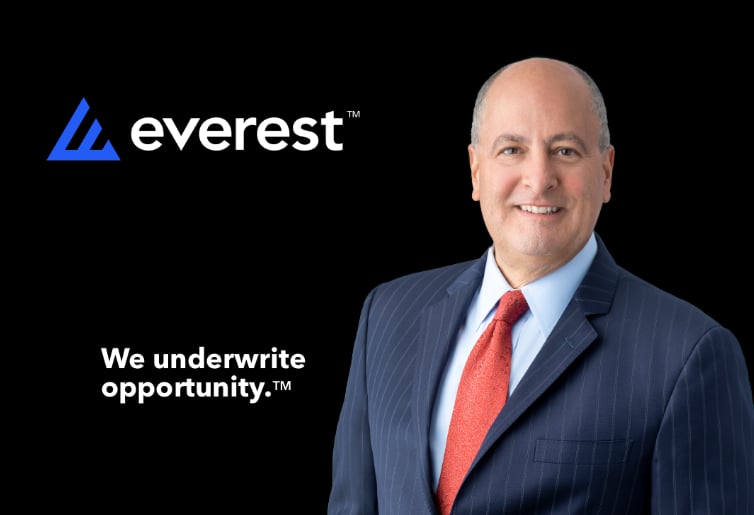Everest sees 30%+ property cat price rise. CEO says leaning into hard market

Everest Group reported quarterly results that show ongoing expansion into the hard property catastrophe reinsurance market, where the company says pricing continues to rise at more than 30%, while terms and conditions are still improving.
Everest reported 43.9% growth in Property Pro-Rata and 41.2% in Property Catastrophe excess-of-loss (XOL) reinsurance during the third-quarter of the year, which helped to drive a net income return on equity of 21.2% for the period, driving a 24.5% annualised shareholder return.
While saying that pricing continues to increase and that there is an ongoing flight to quality globally in reinsurance.
Everest said that it experienced “robust pricing momentum” in the third-quarter, with catastrophe pricing up by more than 30%, with improved terms and conditions.
On the results, Everest President & CEO Juan C. Andrade said, “Everest’s third quarter performance was excellent. We delivered outstanding returns including a near 20% operating return on equity and an annualized 25% total shareholder return.”
Then, providing some colour on the outlook towards the end of year renewals, Andrade said, “We are leaning into the hard reinsurance market, where favorable conditions and the global flight to quality persist.
“As a lead market and preferred partner, we are well-positioned for the upcoming January renewals. We continue to expand our global reinsurance portfolio at significantly improved risk adjusted returns.”
Everest said that it has been growing its reinsurance business at a record rate of 32.7%, finding market conditions too good to miss out on, while demand also sufficient to support this expansion of its book, it appears.
All of which has positive read-across for the reinsurance market in general, insurance-linked securities (ILS) market participants, and for Everest’s own third-party reinsurance capital vehicle, Mt. Logan Re.
Year-on-year improvements in Everest’s combined ratio and attritional combined ratio reflect the fact reinsurance has moved up and away from frequency, which is driving greatly improved results, despite the third-quarter seeing plenty of severe weather and catastrophe loss activity around the globe.
The company explained that it still sees “Multiple avenues for capital deployment at superior returns, most notably in, but not exclusive to property catastrophe lines.”
Part of this is being achieved by expanding the gross underwriting book through writing higher shares with existing clients.
Which is somewhere the Mt. Logan Re third-party capital vehicle, which operates as a kind of collateralized reinsurance sidecar like investment vehicle for third-party investor partners, can play a significant role.
As Everest grows its relevance with clients, it can leverage the appetite of third-party investors to help it grow into property cat risks at an even faster rate, sharing in the economics of the underwriting.
Evidence of the reduced catastrophe risk being assumed, despite the strong growth at Everest, is perhaps clearest in how the firm’s PML has declined over time.
Back in 2017, Everest’s 1-in-100 PML for southeast US wind was 11.6%, but it’s now down at just 4.4% at mid-year 2023, and over the last year fell from 5.2%.
The California quake 1-in-100 PML has dropped from 9.7% in 2017, to 6.5% in 2022, to 5.6% in 2023.
Which shows that, despite growing into property catastrophe risks, Everest has taken advantage of the hard market terms to improve the quality of its portfolios, becoming more remote from some of the peak risks.
The results show that the firm has also moved away from frequency, likely a reflection of the restructuring of property cat treaties and the reductions in aggregate limits deployed.
Everest said it has made, “Deliberate efforts to optimize our portfolio and reduce cat volatility continue to improve our risk adjusted returns.”
Looking forward, on reinsurance, the company, “Expect favorable market conditions to continue through 2023 and into 2024, outlook remains strong.”
We assume that the Mt. Logan Re vehicle will be capitalising on the market opportunity as well, while Everest’s results and performance will also prove an attraction to investors looking to participate in the risk and economics its underwriting produces, without having to invest in the equity of the re/insurer.






